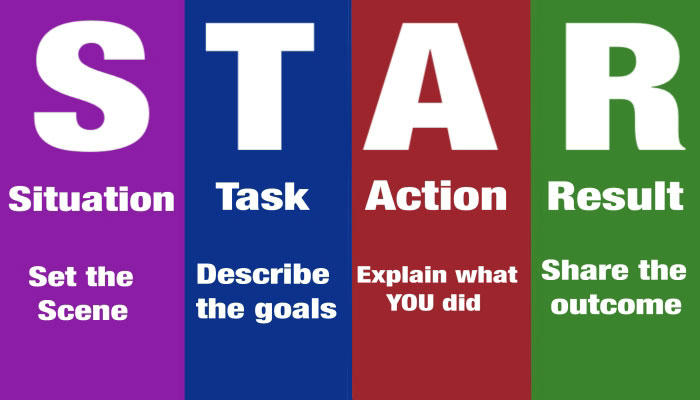Psychology Tricks to Ace Your Job Interview: A Fun & Informed Guide for College Students
You’ve polished your resume, rehearsed your elevator pitch, and even ironed your lucky shirt. Yet as you step into the interview room, your mind may go blank and your palms might feel clammy. Interviews are complex—they test not only what you say but also how you say it. In this guide, we blend practical psychology tips with a realistic perspective. Note: Some techniques have mixed scientific backing, so it’s important to adapt them to your own style.
1. The STAR Method: Turn Stories into Gold

The STAR framework (Situation, Task, Action, Result) is a reliable tool to structure your answers. Instead of recounting every mishap (like accidentally sending a meme to a professor), use STAR to highlight your problem-solving skills:
- Situation: Describe the context (e.g., “During a group project, our team missed an important deadline.”)
- Task: Explain your responsibility (e.g., “I volunteered to streamline our workflow.”)
- Action: Detail the steps you took (e.g., “I introduced a shared calendar and daily check-ins.”)
- Result: Share the outcome (e.g., “We submitted the project ahead of schedule and earned high marks.”)
Tip: Adapt your stories to the job’s requirements. Practice a few scenarios—whether they’re based on class projects or extracurricular experiences—to demonstrate teamwork and resilience.
2. Body Language: Your Silent Superpower

Nonverbal cues can reinforce your message, but remember that research on techniques like "power posing" is still debated. Here are some evidence-informed suggestions:
- Eye Contact: Aim for balanced eye contact (roughly 60-70%) to show engagement without coming off as intense.
- Posture: Sit upright to convey confidence, but avoid rigidity. A relaxed posture works best.
- Hand Gestures: Use natural gestures; keeping your hands visible (resting on the table or lightly gesturing) signals openness.
- Smile: A genuine smile can ease tension—for you and the interviewer.
Note: While power poses might boost confidence temporarily, they are not a substitute for thorough preparation.
3. Managing Interview Anxiety: Reframe and Breathe

It’s normal to feel nervous. Instead of letting anxiety overwhelm you, try these strategies:
- Reframe Your Mindset: Remind yourself, "I’m not anxious—I’m excited." Studies suggest that reappraising anxiety can enhance performance, although results may vary by individual.
- Controlled Breathing: Practice a 4-4-6 breathing pattern—inhaling for 4 seconds, holding for 4, and exhaling for 6—to help regulate your heart rate.
- Visualize Success: Spend a few minutes visualizing a positive outcome. Imagining success can prepare your brain for a confident performance.
Tip: If you experience a momentary blank, it’s okay to say, "Let me take a moment to collect my thoughts." This shows composure and self-awareness.
4. Handling Curveball Questions with Creativity

Interviewers might throw unexpected questions to test your creativity and problem-solving:
- Stay Playful: For a question like “What’s your spirit animal?”, you might say, "A dolphin—I’m adaptable and work well in teams."
- Explain Your Process: When facing logic puzzles (e.g., estimating how many tennis balls fit in a school bus), outline your reasoning step-by-step. They’re more interested in your thought process than the exact answer.
- Flip the Script: For challenging queries like “Why shouldn’t we hire you?”, frame your answer in terms of growth, such as admitting you sometimes overprepare while emphasizing your commitment to continuous improvement.
Reminder: There isn’t always a “right” answer—interviewers want to see how you think under pressure.
5. Ask Questions That Stand Out

The final minutes of an interview are an opportunity to make a memorable impression:
- Culture and Values: Ask questions like, "What team tradition do you enjoy the most?"
- Growth and Learning: Inquire, "How does your organization support professional development?"
- Impact and Challenges: Pose a question such as, "What is one key challenge this role will tackle in the next six months?"
Asking thoughtful questions shows your genuine interest and helps you assess if the company is the right fit for you.
6. The Follow-Up: The Psychology Behind a Thank-You Note

Sending a thank-you note is a simple yet powerful step:
- Personalize It: Reference a specific moment or topic discussed during the interview.
- Reinforce Your Fit: Briefly mention why you’re excited about the opportunity and how your skills align with the role.
- Keep It Concise: A short, well-crafted email (3-4 sentences) can make a lasting impression.
Fun Fact: Although only a minority of candidates send thank-you notes, doing so can significantly differentiate you from the competition.
Conclusion: Embrace Your Unique Strengths
Interviews blend skill with mindset. While these psychology tricks offer helpful guidance, tailor them to fit your personality and the specific context of each interview. Your authenticity, preparation, and ability to learn from every experience are your strongest assets.
Remember, interviews are not just about impressing the employer—they’re also about finding a place where you can thrive. Go in confident, be adaptable, and let your genuine self shine through.
Good luck, and may your next interview be both a learning experience and a stepping stone to success!
